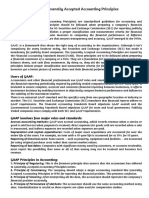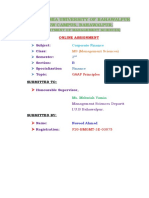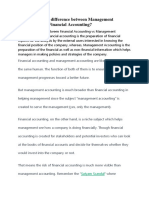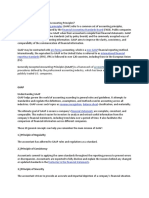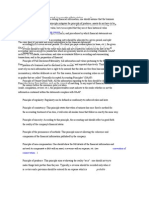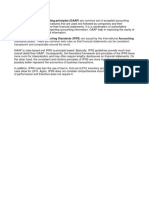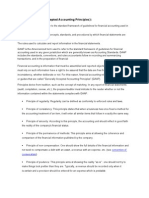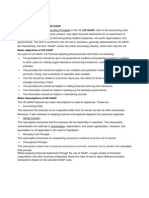0% found this document useful (0 votes)
16 views2 pagesGAAP Learning Material
GAAP, or Generally Accepted Accounting Principles, is a set of standards for preparing financial statements to ensure consistency and transparency. Its key principles include regularity, consistency, sincerity, and full disclosure, which help protect stakeholders' interests and enhance the reliability of financial information. GAAP is primarily used in the United States, while IFRS is the international standard, with both aiming for transparency but differing in guidelines.
Uploaded by
lindsmursCopyright
© © All Rights Reserved
We take content rights seriously. If you suspect this is your content, claim it here.
Available Formats
Download as PDF, TXT or read online on Scribd
0% found this document useful (0 votes)
16 views2 pagesGAAP Learning Material
GAAP, or Generally Accepted Accounting Principles, is a set of standards for preparing financial statements to ensure consistency and transparency. Its key principles include regularity, consistency, sincerity, and full disclosure, which help protect stakeholders' interests and enhance the reliability of financial information. GAAP is primarily used in the United States, while IFRS is the international standard, with both aiming for transparency but differing in guidelines.
Uploaded by
lindsmursCopyright
© © All Rights Reserved
We take content rights seriously. If you suspect this is your content, claim it here.
Available Formats
Download as PDF, TXT or read online on Scribd
/ 2

